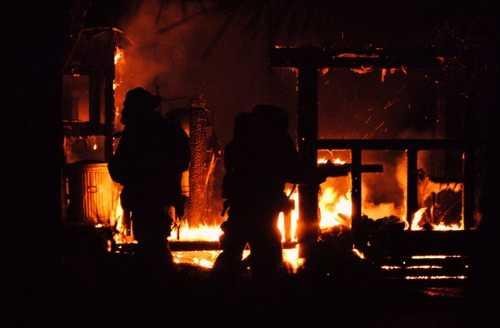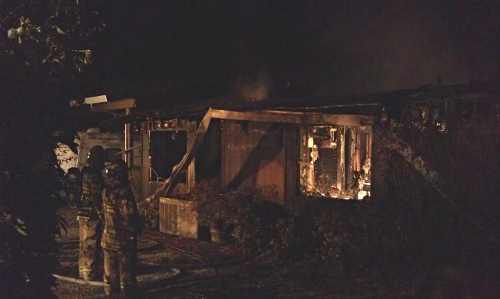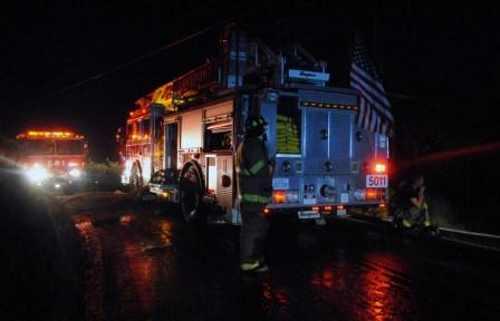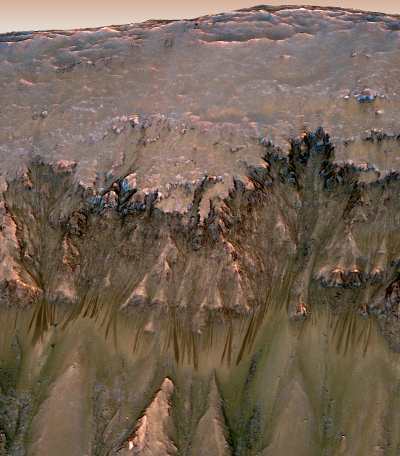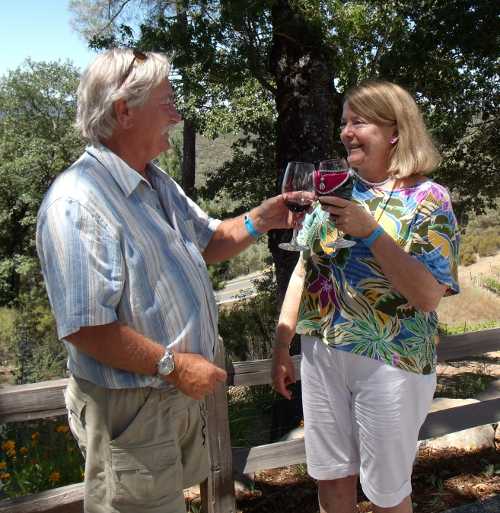
Lake County residents Tom Jones and Cathy Hall enjoy wine and the view at the Moore Family Winery on Cobb Mountain, Calif., during the 2011 Lake County Wine Adventure. Photo by Esther Oertel.
If you were out and about in Lake County last weekend, you may have noticed the influx of visitors to our fair land for the seventh annual Lake County Wine Adventure.
Had you not been aware of this annual festivity, you may have wondered why large purple flags snapped in the breeze at key points throughout the county, or what people were doing traveling about with maps and wine glasses in hand.
The weekend’s events are organized and promoted by the Lake County Winery Association (LCWA) as a way to showcase Lake County wines and encourage out-of-town visitors to our county.
My husband and I were among the throngs that enjoyed food and wine at points north and south. Being firm believers in not driving while drinking, we developed a system that worked rather well; on Saturday, I was the designated driver, and on Sunday, he was.
Along these lines, I’m happy to report that the “designate a driver” program encouraged by the LCWA was more successful than ever. Monica Rosenthal, LCWA executive director, said they received substantially more inquiries about the program this year than in the past, as well as more requests for information about limousine services.
It seemed that everywhere I went, wine enthusiasts were accompanied by someone sporting one of the designated driver buttons funded by the Clearlake Police Officers Association and the Lake County Alcohol and Other Drug Services division of the Lake County Mental Health Department.
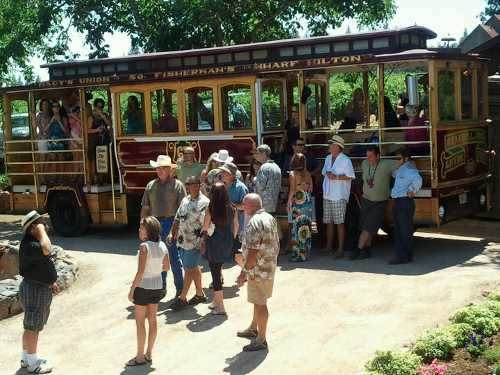
A faux cable car from San Francisco, Calif. ferried wine enthusiasts around during the 2011 Lake County Wine Adventure. Photo courtesy of Bonnie Sears.
One creative group rented a faux cable car from San Francisco to ferry them about. I was told it took a full five hours to get to Lake County from its home by the bay.
Like a mythical ghost ship, stories were told about this unique transport as I traveled from winery to winery; however, I didn’t ever see it myself. Thanks to Bonnie Sears, who contributed a photo of it, I can now attest that it’s real.
While last year the diversity of the various wineries intrigued me, this year my mind was absorbed with the adventure of the event.
During my conversation with Rosenthal, she mentioned that while other wine-producing areas have passport events, they’re typically confined to a single region along a well-traveled route.
In contrast to this, the wineries in Lake County are situated in such a way that traveling from one to another is truly an adventure.
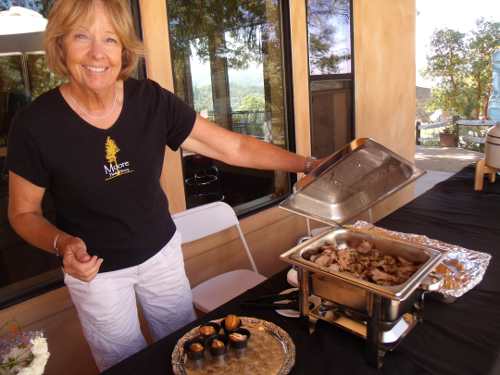
Val Guarin, long-time Moore family friend, displays the tri-tip sandwiches offered at the Moore Family Winery on Cobb Mountain, Calif. during the 2011 Lake County Wine Adventure. Photo by Esther Oertel.
Some wineries are nestled in remote valleys, others are atop mountains or on lakeshores, some are along dirt roads and others are at the homes of the winery owners.
Rosenthal told of a group of five couples that increased their adventure by traveling the back route from the Brassfield Estate Winery in the hills above Clearlake Oaks to the Tulip Hill Winery on Highway 20 in Nice.
We certainly had our share of jostling jaunts as we traveled along the routes that were unpaved. I have to say that each effort was entirely worth it once we reached our winery destination.
Other than one repeat venue, none of the wineries I visited last year were on my route this year. I prefer to meander rather than rush, to soak up atmosphere rather than get a passport stamped. My favorite venues include those that are both on and off my 2011 route.

Tracey Hawkins of Hawk & Horse Vineyards displays the port-filled chocolates she specially ordered for the 2011 Lake County Wine Adventure. Photo by Esther Oertel.
Free roaming chickens greeted us as we approached the Beaver Creek Vineyards tasting room situated in a small, rustic ranch house on the edge of their organic vineyard. Pens with docile sheep were nearby, only adding to the country charm of this venue.
The tasting room interior was reminiscent of an Old West saloon, complete with dark wood, behind-the-bar mirror and friendly barkeeps. While there was no player piano, live guitar music added to the festive atmosphere.
At Langtry Estate & Vineyards, a barrel storage room was turned into an intimate café for wine adventurers. Small tables, Chinese lanterns and glowing red lights provided the décor.
Tom Jones, one of the people I ran into later in the adventure (new to the county and a first timer on the Wine Adventure) described being overwhelmed by the history of Lily Langtry’s stories and artifacts here. They impressed him even more than the wine, which he enjoyed.
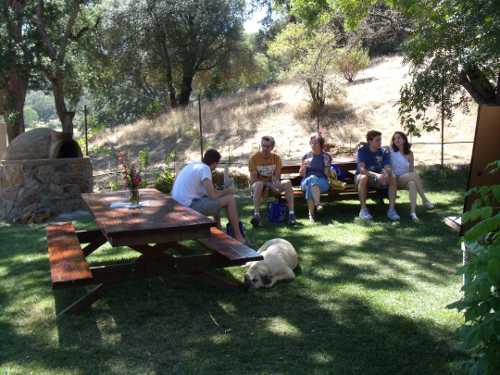
These participants in the 2011 Lake County Wine Adventure relax at Six Sigma Ranch, Vineyards & Winery in Lower Lake, Calif. Note the hand-built pizza oven in the upper left corner. Photo by Esther Oertel.
I chatted in the darkened café with Kelseyville denizens Jan and Darryl Smith, who were enjoying the event with friends from Reno, Nev., Carl and Caroline Giufurta.
They had just come from visiting Gregory Graham Wines, and like many I met along the adventure, raved about the exquisite food and wine pairings there. (I also heard the same about Tulip Hill’s fare.)
Darryl Smith, the group’s designated driver, was especially impressed that Greg Graham himself manned the barbecue.
The atmosphere at Hawk & Horse Vineyards was homey, with the winery owners' young daughter selling gold-painted horseshoes outside the tasting room to raise money for her rodeo endeavors.
One of the hits of the day were the chocolates filled with Hawk & Horse port wine that owner, Tracey Hawkins, had specially made for the event.
The shaded lawn surrounding the Six Sigma Ranch, Vineyards and Winery former stage stop tasting room served as the platform for the food and wine pairings there. I was quite impressed with one of their food offerings, pinot noir-soaked prunes, and I must confess that I had to exercise great control to keep myself from eating every last one.
Family patriarch and Six Sigma founder Kaj Ahlmann was on hand to personally greet each visitor, and eager sheepdogs provided entertainment with an occasional exhibition of their ability to herd some very patient sheep.
The mellow atmosphere of this venue lulled many a visitor into sitting a spell to relax and enjoy the shade as well as the wines, myself included.
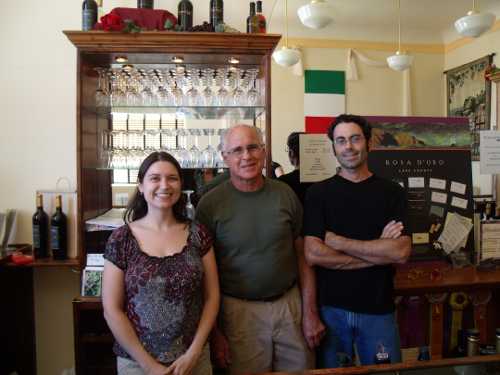
Family members Livia Buttita-Kurtz, Nick Buttita and Pietro Buttita poured wine at the Rosa d'Oro Vineyards tasting room in Kelseyville, Calif. during the 2011 Lake County Wine Adventure. Photo by Esther Oertel.
The Moore Family Winery on Cobb Mountain offered sweeping mountain vistas from their tasting room and deck, where long-time friends of the winery founders greeted visitors and served food.
Amazingly, the Bellamy Family from San Diego managed to fit in 14 winery stops prior to their visit to Moore.
Barbara Bellamy and daughter, Britni, expressed their delight in the diversity of the wineries here, saying each one is impressive in its own way, from large, sumptuous estates like the Brassfield Estate Winery to those more rural in nature, such as Noggle Vineyards & Winery (where they said the food was excellent), Hawk & Horse Vineyards and Ployez Winery. They were especially impressed with the hospitality they experienced throughout.
While enjoying the patio at Moore Family Winery, I received a tip from fellow Lake County resident, Cathy Hall, about the food pairings at the Laujor Estate venue, where Cougar’s Leap Winery and McDermaid Family Vineyards were also pouring wine at the Laujor family’s home.
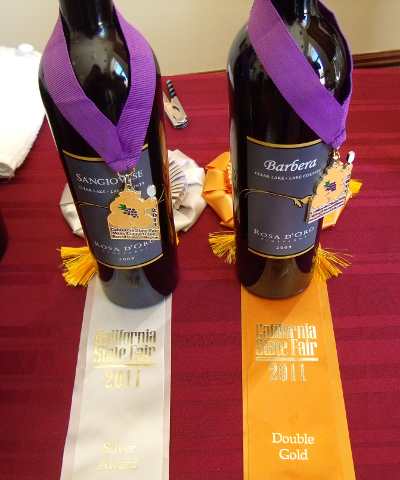
Displayed at the Rosa d'Oro Vineyards tasting room in Kelseyville, Calif. are the awards received for their wines at the 2011 California State Fair in Sacramento, Calif. Photo by Esther Oertel.
When I arrived there, I was immediately taken by the expansive view of the vineyards with the blue of Clear Lake in the background.
It was then I noticed the backyard swimming pool. Still and perfectly clear, this azure gem beckoned, enticing me to take a running leap into its cool, sparkling water.
Instead, I demurely moved to the line of tables with their thoughtful and delicious food and wine pairings, where I was impressed over and over again. (Was it possible that Brie could be that buttery, polenta that creamy, strawberries that luscious? Apparently, yes.)
Vigilance Winery is another venue that had million dollar views. It was hard to tear my eyes away from the view of Clear Lake that overtook me at every angle.
The Vigilance tasting room is in a renovated home from 1926, and their white wines were offered in the cellar of that historic place. Up on the deck, employee Roberto Reyes served up red wines to pair with some tender and tasty home grown lamb.
We finished the Wine Adventure weekend with wine and food on Main Street in Kelseyville, where the Rosa D’Oro Vineyards and Wildhurst Vineyards tasting rooms are situated. Another winery, Shed Horn Cellars, poured wine down the street at the Saw Shop Restaurant.
While information on the number of tickets sold won’t be available until the Wine Adventure committee has a chance to meet, Rosenthal reported that attendance was up substantially from previous years.
Last year, more than 1,000 people participated in the Wine Adventure. One venue saw at least double the attendance of last year, and another had to have glasses replenished due to the heavy influx of visitors.
If you’re interested in taking part next year, mark your calendars for the last weekend in July and be sure to line up your designated driver!
Esther Oertel, the “Veggie Girl,” is a culinary coach and educator and is passionate about local produce. Oertel teaches culinary classes at Chic Le Chef in Hidden Valley Lake, Calif., and The Kitchen Gallery in Lakeport, Calif., and gives private cooking lessons. She welcomes your questions and comments; e-mail her at This email address is being protected from spambots. You need JavaScript enabled to view it..
Follow Lake County News on Twitter at http://twitter.com/LakeCoNews, on Tumblr at www.lakeconews.tumblr.com, on Facebook at http://www.facebook.com/pages/Lake-County-News/143156775604?ref=mf and on YouTube at http://www.youtube.com/user/LakeCoNews.
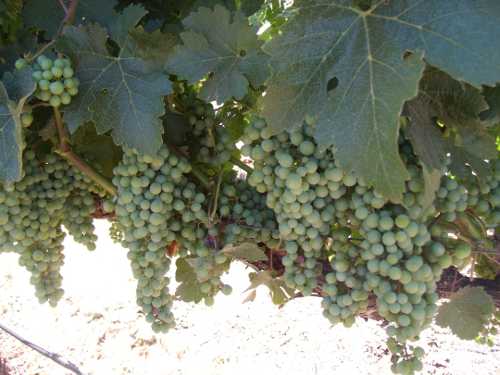
Grapes mature on the vine at Vigilance Winery near Lower Lake, Calif. during the 2011 Lake County Wine Adventure. Photo by Esther Oertel.


